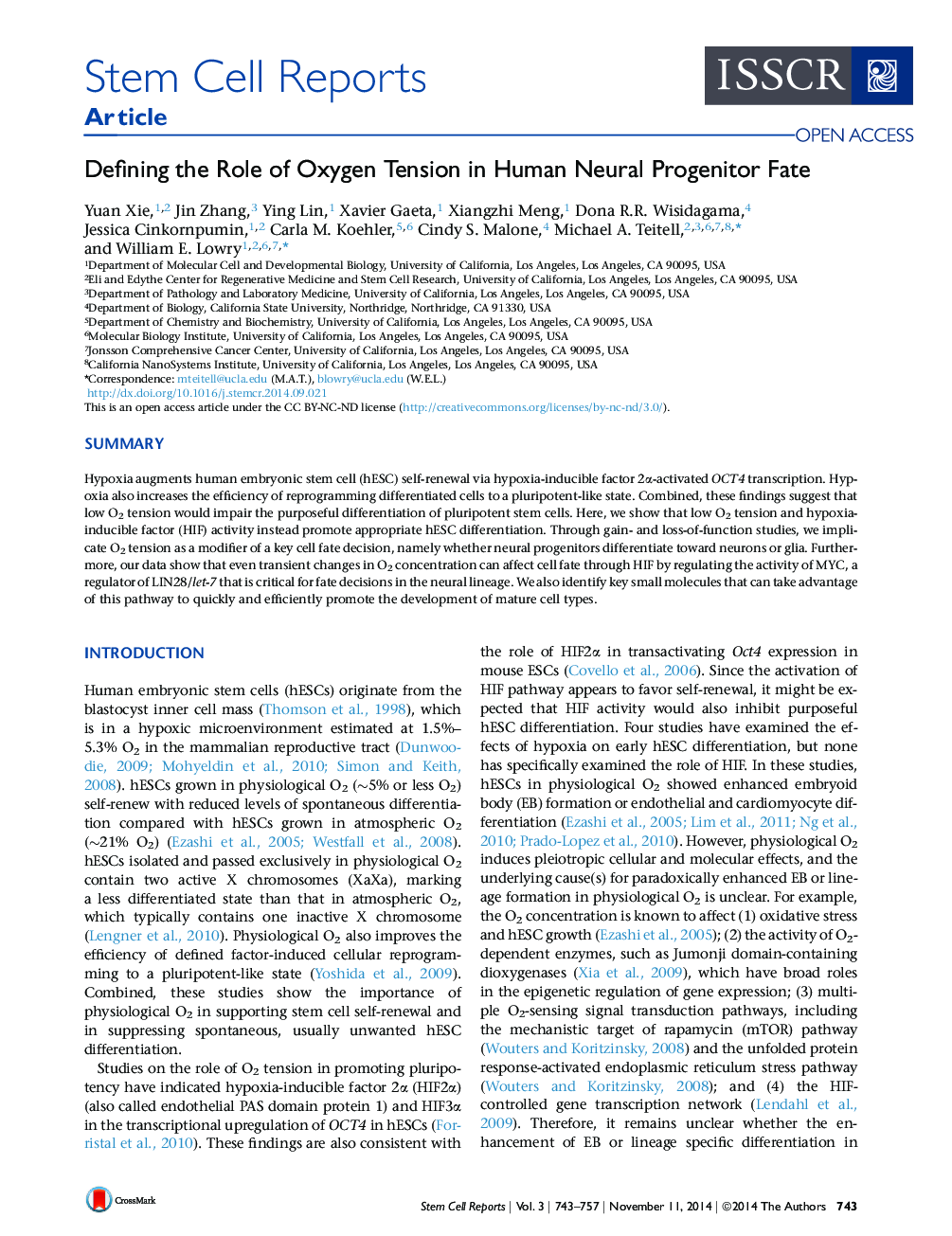| Article ID | Journal | Published Year | Pages | File Type |
|---|---|---|---|---|
| 2093325 | Stem Cell Reports | 2014 | 15 Pages |
•Low oxygen tension promotes gliogenesis of human neural progenitors•HIF activation is required for gliogenic effect of lowered oxygen tension•HIF acts through MYC to disrupt LIN28/let-7 in gliogenesis•Small molecule stimulators of HIF or inhibitors of MYC can drive gliogenesis
SummaryHypoxia augments human embryonic stem cell (hESC) self-renewal via hypoxia-inducible factor 2α-activated OCT4 transcription. Hypoxia also increases the efficiency of reprogramming differentiated cells to a pluripotent-like state. Combined, these findings suggest that low O2 tension would impair the purposeful differentiation of pluripotent stem cells. Here, we show that low O2 tension and hypoxia-inducible factor (HIF) activity instead promote appropriate hESC differentiation. Through gain- and loss-of-function studies, we implicate O2 tension as a modifier of a key cell fate decision, namely whether neural progenitors differentiate toward neurons or glia. Furthermore, our data show that even transient changes in O2 concentration can affect cell fate through HIF by regulating the activity of MYC, a regulator of LIN28/let-7 that is critical for fate decisions in the neural lineage. We also identify key small molecules that can take advantage of this pathway to quickly and efficiently promote the development of mature cell types.
Graphical AbstractFigure optionsDownload full-size imageDownload as PowerPoint slide
